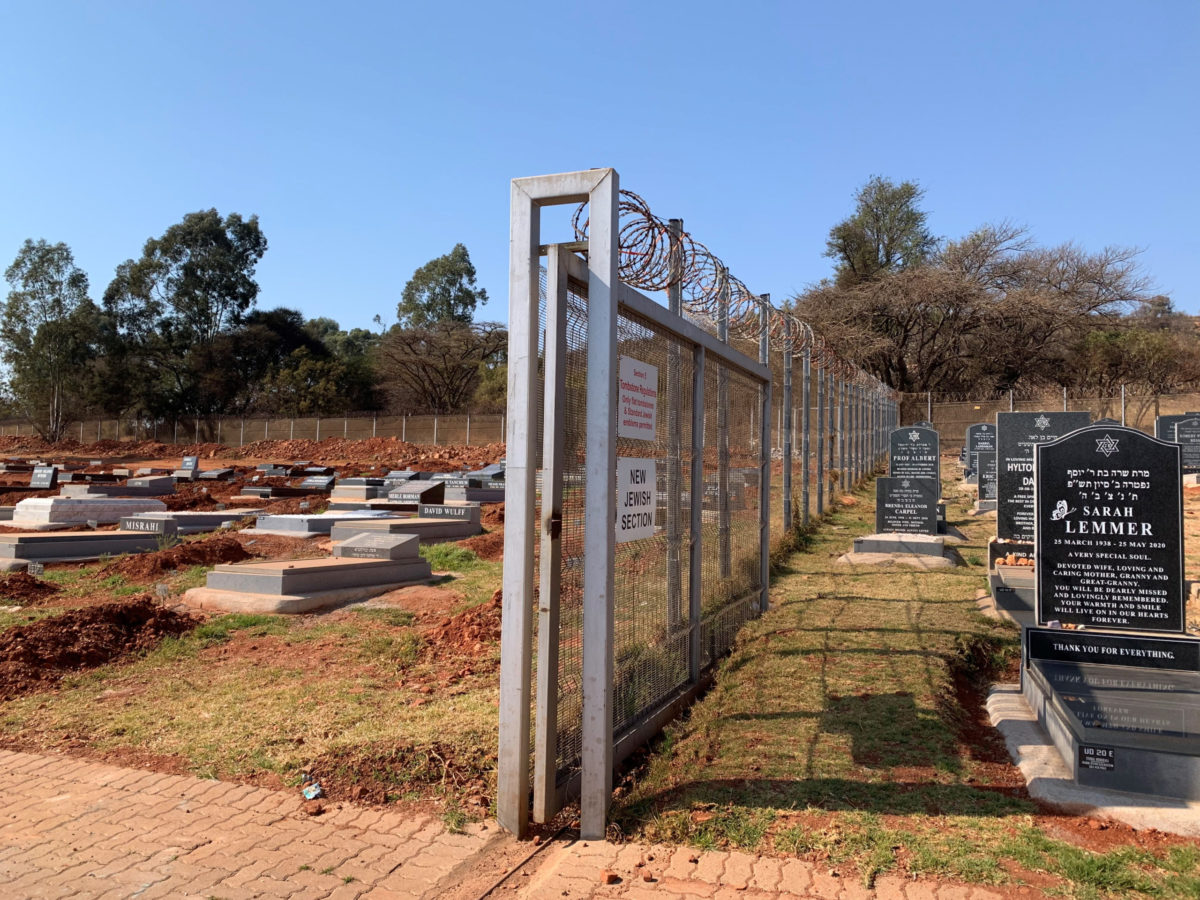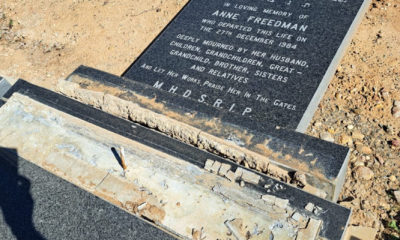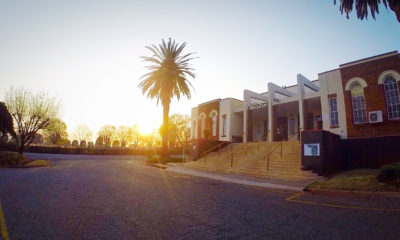
News

Stoney sign demarcates graves at Westpark
Westpark Cemetery in Johannesburg has opened a new Jewish section at the top of the cemetery – called section E – in which only “flat tombstones and standard Jewish emblems will be permitted”, according to a notice posted by the Chevrah Kadisha Burial Society on the fence.
The instruction about the tombstones and symbols is on what used to be the east boundary fence of the Jewish cemetery and is now a clear demarcation line between the “old” section with upright tombstones, and the newly opened section, which allows only flat slabs or tombstones not more than 0.5m high.
The change comes as Jewish graves around the country have been vandalised, particularly in country communities, the most recent incidents occurring in Oudtshoorn in August 2020, when 33 gravestones were vandalised, and Bloemfontein, where 125 gravestones were smashed. In those cases, work has been done to repair and relay the upright tombstones flat at the expense of local Jewish organisations and families.
But the new rules at Westpark aren’t primarily motivated by vandalism, although “future vandalism” is a factor, according to a member of the Chevrah Kadisha who wanted to remain anonymous.
“A number of families don’t live in South Africa any longer – COVID-19 has made this particularly clear to us,” he said. “Therefore, there’s nobody to maintain the tombstones if they fall over. Sometimes, we flip them over on their backs, but sometimes they fall and smash the grave bed. If that happens, it can cost about R20 000 to fix.”
This issue was highlighted by a tornado in Johannesburg a few years ago which took down about 12 tombstones, he said.
“We try to trace the families to do repairs, but often we aren’t able to.” In that case, the grave is left broken, as the Chev doesn’t have the budget to maintain graves.
Another reason for the change is that the new section E is “far away from anywhere”, he said, so it’s more secure to have low tombstones as “vagabonds hide behind vertical tombstones to attack mourners”.
Tombstones are fast becoming a luxury few can afford. In the United States, the Jewish Cemetery Association of Massachusetts, the largest Jewish cemetery association in North America, changed its rules to prevent mourners – even those who could afford a gravestone – from putting up a tombstone if they hadn’t paid for a funeral, according to an article in The Forward published in 2016. In those cases, only a small flat stone with room for some words would be allowed “in the interest of fairness”.
South African stonemasons say that the cost for flat tombstones is actually higher than upright ones as a full slab can be mandatory with a flat grave whereas upright tombstones often don’t include a full slab. But they point out that horizontal tombstones are better – and fast being adopted, particularly in Cape country communities – because there is “no fear of them being stolen”.
A rabbi closely associated with the Chev, who also wanted to remain anonymous, said that while they “try not to be too dogmatic”, the prescription is a maximum tombstone height of 0.5m.
It was easier to introduce the new prescriptions at Westpark upon opening a completely new Jewish section, the rabbi said, so the demarcation would be clear. He has no idea when – or even if – the enormous fence dividing the two Jewish sections will be removed.
Although all Jewish graves in Westpark are required to have a Jewish inscription including the Hebrew name of the deceased and the name of the parent/s, the situation is trickier when it comes to emblems, the rabbi said.
The aim of the rule about “only standard Jewish symbols” is to exclude “secular symbols” from tombstones – such as soccer balls, the rabbi says. Even Kohanim hands and Shabbos candles are frowned upon, but he insists that overall, these rules are intended to keep things “tasteful”.
“A tombstone is a holy monument,” he said, pointing out that the uniform look of a Jewish cemetery comes straight from a decree from our sages that tombstones be standardised. In fact, during interviews for this story, it was pointed out that Westpark has a rule that all gravestones be made out of grey granite, although the rabbi said that there was “no rule regarding what stone is used for tombstones”.
“Death is the great equaliser,” he said. “We shouldn’t make a grave stand out. Hashem will decide who is truly great.”









Gillian
September 17, 2021 at 10:38 am
It’s dictatorial to decree what symbols can go on a gravestone.
Richard Gardiner
May 7, 2024 at 3:44 pm
I agree, graves shouldn’t stand out to make anyone look more important. Star of David is enough